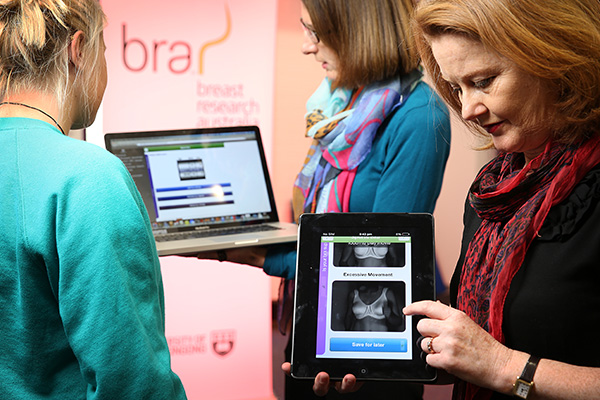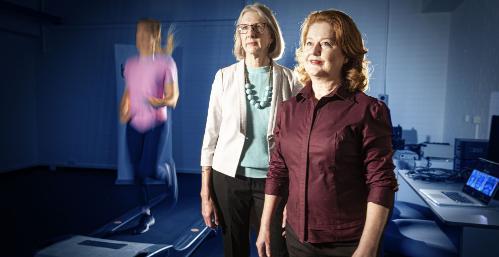October 10, 2014
Free bra fitting app spells the end of change room dilemmas
The search for the perfect fitting sports bra just got a lot easier thanks to the launch of a free web-based app developed by Breast Research Australia.

The app, Sports Bra, which is is currently freely available on iTunes and will soon also be available on the UOW website, is the only app in the world to contain evidence-based information to help women choose a well-fitting, supportive sports bra that is comfortable to wear during exercise.
Dr Deirdre McGhee from Breast Research Australia, based in the Biomechanics Research Laboratory at UOW, said a staggering 85 per cent of Australian women are wearing the wrong size bra.
“Finding and trying on bras can be frustrating, exhausting and time consuming. With so many bras to choose from, the task of finding a well-fitting, supportive sports bra can seem overwhelming.”
“And like running shoes, if a bra does not fit correctly, it cannot provide sufficient support, even if it is one of the best-designed sports bras available on the market.”
Using step-by-step instructions combined with clearly labelled photographs and movies, the app, guides the user in finding the right bra for their exercise needs. The app is not linked to any brand of bra and covers Australian, European and US bra sizes.
Dr McGhee said the app was designed to encourage women to participate in physical activity and enjoy the health benefits associated with an active lifestyle.
“Sports Bra is designed to empower women globally to choose a well-fitted and supportive bra so they can participate comfortably in activities of daily living, work and recreation, irrespective of breast size.”
She said that poor bra fit and insufficient breast support during physical activity can lead to excessive breast movement, which in turn can cause embarrassment and breast discomfort, and in extreme cases, can contribute to poor posture and musculoskeletal problems such as upper limb neural symptoms and neck and back pain.
“A well-fitted and supportive bra can alleviate up to 85 per cent of these symptoms, allowing women to exercise in greater comfort and possibly removing the need for breast reduction surgery”, Dr McGhee added.
Dr McGhee said a well-fitted bra should have no winkles or gaps in the cups, with no bulging of the breasts over the top or sides of the cups, the band should be firm but comfortable around the trunk so that is does not slide up or down the back as you move your arms. Likewise, the straps should be firm but comfortable so that they do not slide off as you move your arms but do not dig into your shoulders.
“Two key indicators that you have achieved sufficient breast support are: minimal breast movement, with your breasts moving in synchrony with your trunk, and no breast discomfort.”
UOW’s Biomechanics Research Laboratory conducts world-leading breast health research under the banner of Breast Research Australia.
Media contact: Zoe Taylor, UOW Media and PR Manager, on +61 405 014 028 or ztaylor@uow.edu.au
